Classes
- AptamerGlyph
- AssemblyScarGlyph
- AssemblyScarGlyphAlternative
- AssociationGlyph
- BiopolymerLocationGlyph
- BluntRestrictionSiteGlyph
- CDSGlyph
- CDSGlyphAlternative
- ChromosomalLocusGlyph
- CircularPlasmidGlyph
- CleavageSiteGlyph
- ComplexGlyph
- ComplexGlyphAlternative
- CompositeGlyph
- ControlGlyph
- DegradationGlyph
- DissociationGlyph
- DnaBiopolymerLocationGlyph
- DnaBiopolymerLocationGlyphAlternative
- DnaCleavageSiteGlyph
- DnaStabilityElementGlyph
- Double-StrandedNucleicAcidGlyph
- Double-StrandedNucleicAcidGlyphAlternative
- EngineeredRegionGlyph
- FivePrimeOverhangSiteGlyph
- FivePrimeOverhangSiteGlyphAlternative
- FivePrimeStickyEndRestrictionEnzymeCleavageSiteGlyph
- FivePrimeStickyEndRestrictionEnzymeCleavageSiteGlyphAlternative
- Glyph
- HexagonSimpleChemicalGlyph
- InertDNASpacerGlyph
- InhibitionGlyph
- InteractionGlyph
- InteractionNodeGlyph
- IntronGlyph
- MacromoleculeGlyph
- MolecularSpeciesGlyph
- NoGlyphAssignedGlyph
- NoGlyphAssignedSpeciesGlyph
- Non-CodingRNAGeneGlyph
- OmittedDetailGlyph
- OperatorBindingSiteGlyph
- OriginofReplicationGlyph
- OriginofTransferGlyph
- OverhangSiteGlyph
- PentagonSimpleChemicalGlyph
- PolyASiteGlyph
- PolypeptideRegionGlyph
- PrimerBindingSiteGlyph
- ProcessGlyph
- ProcessInteractionGlyph
- PromoterSiteGlyph
- ProteinBiopolymerLocationGlyph
- ProteinBiopolymerLocationGlyphAlternative
- ProteinCleavageSiteGlyph
- ProteinGlyph
- ProteinGuideRnaComplexGlyph
- ProteinProteinComplexGlyph
- ProteinSmallMoleculeComplexGlyph
- ProteinStabilityElementGlyph
- RibosomeEntrySiteGlyph
- RnaBiopolymerLocationGlyph
- RnaBiopolymerLocationGlyphAlternative
- RnaCleavageSiteGlyph
- RnaStabilityElementGlyph
- SequenceFeatureGlyph
- SignatureGlyph
- SimpleChemicalGlyph
- SimpleChemicalGlyphAlternative
- Single-StrandedNucleicAcidGlyph
- Single-StrandedNucleicAcidGlyphAlternative
- SpecificRecombinationSiteGlyph
- StabilityElementGlyph
- StickyEndRestrictionEnzymeCleavageSiteGlyph
- StimulationGlyph
- StopSiteGlyph
- TerminatorGlyph
- ThreePrimeOverhangSiteGlyph
- ThreePrimeOverhangSiteGlyphAlternative
- ThreePrimeStickyEndRestrictionEnzymeCleavageSiteGlyph
- ThreePrimeStickyEndRestrictionEnzymeCleavageSiteGlyphAlternative
- TranscriptionStopSiteGlyph
- TranslationStopSiteGlyph
- TriangleSimpleChemicalGlyph
- UnspecifiedGlyph
- UnspecifiedGlyphAlternative
- UnspecifiedNodeGlyph
- UnspecifiedSpeciesGlyph
- UnspecifiedSpeciesGlyphAlternative
AptamerGlyphc back to ToC or Class ToC
IRI: #AptamerGlyph
- has super-classes
- Glyph c
- MolecularSpeciesGlyph c
- isGlyphOf op some component
- isGlyphOf op some role some s o:0000031
- default glyph
-
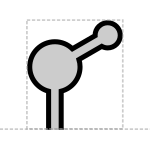
AssemblyScarGlyphc back to ToC or Class ToC
IRI: #AssemblyScarGlyph
- has super-classes
- Glyph c
- MolecularSpeciesGlyph c
- isGlyphOf op some component
- isGlyphOf op some role some s o:0001953
- has sub-classes
- AssemblyScarGlyphAlternative c
- default glyph
-

AssemblyScarGlyphAlternativec back to ToC or Class ToC
IRI: #AssemblyScarGlyphAlternative
- has super-classes
- AssemblyScarGlyph c
- isAlternativeOf op some AssemblyScarGlyph c
- default glyph
-

AssociationGlyphc back to ToC or Class ToC
IRI: #AssociationGlyph
- has super-classes
- Glyph c
- hasIncoming op some role some s b o:0000010
- hasOutgoing op some role some s b o:0000011
- InteractionNodeGlyph c
- isGlyphOf op some interaction
- isGlyphOf op some type some s b o:0000177
- default glyph
-

BiopolymerLocationGlyphc back to ToC or Class ToC
IRI: #BiopolymerLocationGlyph
- has super-classes
- Glyph c
- MolecularSpeciesGlyph c
- isGlyphOf op some component
- isGlyphOf op some role some s o:0000699
- isGlyphOf op some role some s o:0001236
- isGlyphOf op some role some s o:0001237
- has sub-classes
- DnaBiopolymerLocationGlyph c, ProteinBiopolymerLocationGlyph c, RnaBiopolymerLocationGlyph c
- default glyph
-
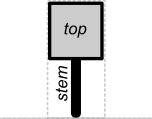
BluntRestrictionSiteGlyphc back to ToC or Class ToC
IRI: #BluntRestrictionSiteGlyph
- has super-classes
- Glyph c
- MolecularSpeciesGlyph c
- isGlyphOf op some component
- isGlyphOf op some role some s o:0001691
- default glyph
-
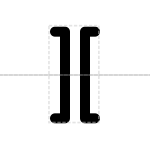
CDSGlyphc back to ToC or Class ToC
IRI: #CDSGlyph
- has super-classes
- Glyph c
- MolecularSpeciesGlyph c
- isGlyphOf op some component
- isGlyphOf op some role some s o:0000316
- has sub-classes
- CDSGlyphAlternative c
- default glyph
-

CDSGlyphAlternativec back to ToC or Class ToC
IRI: #CDSGlyphAlternative
- has super-classes
- CDSGlyph c
- isAlternativeOf op some CDSGlyph c
- default glyph
-

ChromosomalLocusGlyphc back to ToC or Class ToC
IRI: #ChromosomalLocusGlyph
- has super-classes
- Glyph c
- MolecularSpeciesGlyph c
- isGlyphOf op some component
- isGlyphOf op some role some s o:0000830
- default glyph
-

CircularPlasmidGlyphc back to ToC or Class ToC
IRI: #CircularPlasmidGlyph
- has super-classes
- Glyph c
- MolecularSpeciesGlyph c
- isGlyphOf op some component
- isGlyphOf op some role some s o:0002211
- default glyph
-

CleavageSiteGlyphc back to ToC or Class ToC
IRI: #CleavageSiteGlyph
- has super-classes
- Glyph c
- MolecularSpeciesGlyph c
- isGlyphOf op some component
- isGlyphOf op some role some s o:0001688
- isGlyphOf op some role some s o:0001687
- isGlyphOf op some role some s o:0001977
- isGlyphOf op some role some s o:0001956
- has sub-classes
- DnaCleavageSiteGlyph c, ProteinCleavageSiteGlyph c, RnaCleavageSiteGlyph c
- default glyph
-

ComplexGlyphc back to ToC or Class ToC
IRI: #ComplexGlyph
- has super-classes
- Glyph c
- MolecularSpeciesGlyph c
- isGlyphOf op some component
- isGlyphOf op some type some s b o:0000253
- has sub-classes
- ComplexGlyphAlternative c, ProteinGuideRnaComplexGlyph c, ProteinProteinComplexGlyph c, ProteinSmallMoleculeComplexGlyph c
ComplexGlyphAlternativec back to ToC or Class ToC
IRI: #ComplexGlyphAlternative
- has super-classes
- ComplexGlyph c
- ProteinSmallMoleculeComplexGlyph c
- ProteinGuideRnaComplexGlyph c
- ProteinProteinComplexGlyph c
- default glyph
-

CompositeGlyphc back to ToC or Class ToC
IRI: #CompositeGlyph
- has super-classes
- Glyph c
- MolecularSpeciesGlyph c
- default glyph
-

DegradationGlyphc back to ToC or Class ToC
IRI: #DegradationGlyph
- has super-classes
- Glyph c
- hasTail op some role some s b o:0000010
- InteractionGlyph c
- isGlyphOf op some interaction
- isGlyphOf op some type some s b o:0000179
- default glyph
-

DissociationGlyphc back to ToC or Class ToC
IRI: #DissociationGlyph
- has super-classes
- Glyph c
- hasIncoming op some role some s b o:0000010
- hasOutgoing op some role some s b o:0000011
- InteractionNodeGlyph c
- isGlyphOf op some interaction
- isGlyphOf op some type some s b o:0000180
- default glyph
-

DnaBiopolymerLocationGlyphc back to ToC or Class ToC
IRI: #DnaBiopolymerLocationGlyph
- has super-classes
- BiopolymerLocationGlyph c
- isGlyphOf op some component
- isGlyphOf op some role some s o:0000699
- isGlyphOf op some role some s o:0001236
- has sub-classes
- DnaBiopolymerLocationGlyphAlternative c
- default glyph
-
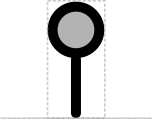
DnaBiopolymerLocationGlyphAlternativec back to ToC or Class ToC
IRI: #DnaBiopolymerLocationGlyphAlternative
- has super-classes
- DnaBiopolymerLocationGlyph c
- isAlternativeOf op some DnaBiopolymerLocationGlyph c
- default glyph
-

DnaCleavageSiteGlyphc back to ToC or Class ToC
IRI: #DnaCleavageSiteGlyph
- has super-classes
- CleavageSiteGlyph c
- isGlyphOf op some component
- isGlyphOf op some role some s o:0001688
- isGlyphOf op some role some s o:0001687
- default glyph
-
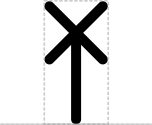
DnaStabilityElementGlyphc back to ToC or Class ToC
IRI: #DnaStabilityElementGlyph
- has super-classes
- StabilityElementGlyph c
- default glyph
-
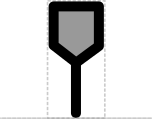
Double-StrandedNucleicAcidGlyphc back to ToC or Class ToC
IRI: #Double-StrandedNucleicAcidGlyph
- has super-classes
- Glyph c
- MolecularSpeciesGlyph c
- isGlyphOf op some component
- isGlyphOf op some type some s b o:0000251
- has sub-classes
- Double-StrandedNucleicAcidGlyphAlternative c
- default glyph
-

Double-StrandedNucleicAcidGlyphAlternativec back to ToC or Class ToC
IRI: #Double-StrandedNucleicAcidGlyphAlternative
- has super-classes
- Double-StrandedNucleicAcidGlyph c
- isAlternativeOf op some Double-StrandedNucleicAcidGlyph c
- default glyph
-

EngineeredRegionGlyphc back to ToC or Class ToC
IRI: #EngineeredRegionGlyph
- has super-classes
- Glyph c
- MolecularSpeciesGlyph c
- isGlyphOf op some component
- isGlyphOf op some role some s o:0000804
- default glyph
-

FivePrimeOverhangSiteGlyphc back to ToC or Class ToC
IRI: #FivePrimeOverhangSiteGlyph
- has super-classes
- OverhangSiteGlyph c
- isGlyphOf op some component
- isGlyphOf op some role some s o:0001932
- has sub-classes
- FivePrimeOverhangSiteGlyphAlternative c
- default glyph
-

FivePrimeOverhangSiteGlyphAlternativec back to ToC or Class ToC
IRI: #FivePrimeOverhangSiteGlyphAlternative
- has super-classes
- FivePrimeOverhangSiteGlyph c
- isAlternativeOf op some FivePrimeOverhangSiteGlyph c
- default glyph
-

FivePrimeStickyEndRestrictionEnzymeCleavageSiteGlyphc back to ToC or Class ToC
IRI: #FivePrimeStickyEndRestrictionEnzymeCleavageSiteGlyph
- has super-classes
- StickyEndRestrictionEnzymeCleavageSiteGlyph c
- isGlyphOf op some component
- isGlyphOf op some role some s o:0001975
- has sub-classes
- FivePrimeStickyEndRestrictionEnzymeCleavageSiteGlyphAlternative c
- default glyph
-

FivePrimeStickyEndRestrictionEnzymeCleavageSiteGlyphAlternativec back to ToC or Class ToC
IRI: #FivePrimeStickyEndRestrictionEnzymeCleavageSiteGlyphAlternative
- has super-classes
- FivePrimeStickyEndRestrictionEnzymeCleavageSiteGlyph c
- isAlternativeOf op some FivePrimeStickyEndRestrictionEnzymeCleavageSiteGlyph c
- default glyph
-
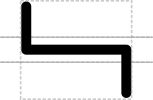
Glyphc back to ToC or Class ToC
IRI: #Glyph
- has super-classes
- thing c
- has sub-classes
- AptamerGlyph c, AssemblyScarGlyph c, AssociationGlyph c, BiopolymerLocationGlyph c, BluntRestrictionSiteGlyph c, CDSGlyph c, ChromosomalLocusGlyph c, CircularPlasmidGlyph c, CleavageSiteGlyph c, ComplexGlyph c, CompositeGlyph c, ControlGlyph c, DegradationGlyph c, DissociationGlyph c, Double-StrandedNucleicAcidGlyph c, EngineeredRegionGlyph c, InertDNASpacerGlyph c, InhibitionGlyph c, InteractionGlyph c, InteractionNodeGlyph c, IntronGlyph c, MacromoleculeGlyph c, MolecularSpeciesGlyph c, NoGlyphAssignedGlyph c, NoGlyphAssignedSpeciesGlyph c, Non-CodingRNAGeneGlyph c, OmittedDetailGlyph c, OperatorBindingSiteGlyph c, OriginofReplicationGlyph c, OriginofTransferGlyph c, OverhangSiteGlyph c, PolyASiteGlyph c, PolypeptideRegionGlyph c, PrimerBindingSiteGlyph c, ProcessGlyph c, ProcessInteractionGlyph c, PromoterSiteGlyph c, ProteinGlyph c, RibosomeEntrySiteGlyph c, SequenceFeatureGlyph c, SignatureGlyph c, SimpleChemicalGlyph c, Single-StrandedNucleicAcidGlyph c, SpecificRecombinationSiteGlyph c, StabilityElementGlyph c, StickyEndRestrictionEnzymeCleavageSiteGlyph c, StimulationGlyph c, StopSiteGlyph c, TerminatorGlyph c, UnspecifiedGlyph c, UnspecifiedNodeGlyph c, UnspecifiedSpeciesGlyph c
HexagonSimpleChemicalGlyphc back to ToC or Class ToC
IRI: #HexagonSimpleChemicalGlyph
- has super-classes
- SimpleChemicalGlyph c
- has sub-classes
- SimpleChemicalGlyphAlternative c
- default glyph
-

InertDNASpacerGlyphc back to ToC or Class ToC
IRI: #InertDNASpacerGlyph
- has super-classes
- Glyph c
- MolecularSpeciesGlyph c
- isGlyphOf op some component
- isGlyphOf op some role some s o:0002223
- default glyph
-

InhibitionGlyphc back to ToC or Class ToC
IRI: #InhibitionGlyph
InteractionGlyphc back to ToC or Class ToC
IRI: #InteractionGlyph
- has super-classes
- Glyph c
- has sub-classes
- ControlGlyph c, DegradationGlyph c, InhibitionGlyph c, ProcessInteractionGlyph c, StimulationGlyph c
InteractionNodeGlyphc back to ToC or Class ToC
IRI: #InteractionNodeGlyph
- has super-classes
- Glyph c
- has sub-classes
- AssociationGlyph c, DissociationGlyph c, ProcessGlyph c, UnspecifiedNodeGlyph c
IntronGlyphc back to ToC or Class ToC
IRI: #IntronGlyph
- has super-classes
- Glyph c
- MolecularSpeciesGlyph c
- isGlyphOf op some component
- isGlyphOf op some role some s o:0000188
- default glyph
-

MacromoleculeGlyphc back to ToC or Class ToC
IRI: #MacromoleculeGlyph
- has super-classes
- Glyph c
- MolecularSpeciesGlyph c
- isGlyphOf op some component
- isGlyphOf op some type some s b o:0000245
- default glyph
-

MolecularSpeciesGlyphc back to ToC or Class ToC
IRI: #MolecularSpeciesGlyph
- has super-classes
- Glyph c
- has sub-classes
- AptamerGlyph c, AssemblyScarGlyph c, BiopolymerLocationGlyph c, BluntRestrictionSiteGlyph c, CDSGlyph c, ChromosomalLocusGlyph c, CircularPlasmidGlyph c, CleavageSiteGlyph c, ComplexGlyph c, CompositeGlyph c, Double-StrandedNucleicAcidGlyph c, EngineeredRegionGlyph c, InertDNASpacerGlyph c, IntronGlyph c, MacromoleculeGlyph c, NoGlyphAssignedGlyph c, NoGlyphAssignedSpeciesGlyph c, Non-CodingRNAGeneGlyph c, OmittedDetailGlyph c, OperatorBindingSiteGlyph c, OriginofReplicationGlyph c, OriginofTransferGlyph c, OverhangSiteGlyph c, PolyASiteGlyph c, PolypeptideRegionGlyph c, PrimerBindingSiteGlyph c, PromoterSiteGlyph c, ProteinGlyph c, RibosomeEntrySiteGlyph c, SignatureGlyph c, SimpleChemicalGlyph c, Single-StrandedNucleicAcidGlyph c, SpecificRecombinationSiteGlyph c, StabilityElementGlyph c, StickyEndRestrictionEnzymeCleavageSiteGlyph c, StopSiteGlyph c, TerminatorGlyph c, UnspecifiedGlyph c, UnspecifiedSpeciesGlyph c
NoGlyphAssignedGlyphc back to ToC or Class ToC
IRI: #NoGlyphAssignedGlyph
- has super-classes
- Glyph c
- MolecularSpeciesGlyph c
- default glyph
-

NoGlyphAssignedSpeciesGlyphc back to ToC or Class ToC
IRI: #NoGlyphAssignedSpeciesGlyph
- has super-classes
- Glyph c
- MolecularSpeciesGlyph c
- default glyph
-

Non-CodingRNAGeneGlyphc back to ToC or Class ToC
IRI: #Non-CodingRNAGeneGlyph
- has super-classes
- Glyph c
- MolecularSpeciesGlyph c
- isGlyphOf op some component
- isGlyphOf op some role some s o:0001263
- isGlyphOf op some role some s o:0000834
- default glyph
-

OmittedDetailGlyphc back to ToC or Class ToC
IRI: #OmittedDetailGlyph
- has super-classes
- Glyph c
- MolecularSpeciesGlyph c
- default glyph
-
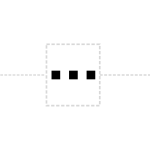
OperatorBindingSiteGlyphc back to ToC or Class ToC
IRI: #OperatorBindingSiteGlyph
- has super-classes
- Glyph c
- MolecularSpeciesGlyph c
- isGlyphOf op some component
- isGlyphOf op some role some s o:0000057
- isGlyphOf op some role some s o:0000409
- default glyph
-

OriginofReplicationGlyphc back to ToC or Class ToC
IRI: #OriginofReplicationGlyph
- has super-classes
- Glyph c
- MolecularSpeciesGlyph c
- isGlyphOf op some component
- isGlyphOf op some role some s o:0000296
- default glyph
-

OriginofTransferGlyphc back to ToC or Class ToC
IRI: #OriginofTransferGlyph
- has super-classes
- Glyph c
- MolecularSpeciesGlyph c
- isGlyphOf op some component
- isGlyphOf op some role some s o:0000724
- default glyph
-
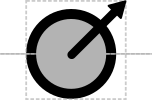
OverhangSiteGlyphc back to ToC or Class ToC
IRI: #OverhangSiteGlyph
- has super-classes
- Glyph c
- MolecularSpeciesGlyph c
- isGlyphOf op some component
- isGlyphOf op some role some s o:0001932
- isGlyphOf op some role some s o:0001933
- has sub-classes
- FivePrimeOverhangSiteGlyph c, ThreePrimeOverhangSiteGlyph c
PentagonSimpleChemicalGlyphc back to ToC or Class ToC
IRI: #PentagonSimpleChemicalGlyph
- has super-classes
- SimpleChemicalGlyph c
- has sub-classes
- SimpleChemicalGlyphAlternative c
- default glyph
-

PolyASiteGlyphc back to ToC or Class ToC
IRI: #PolyASiteGlyph
- has super-classes
- Glyph c
- MolecularSpeciesGlyph c
- isGlyphOf op some component
- isGlyphOf op some role some s o:0000553
- default glyph
-
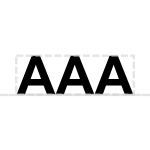
PolypeptideRegionGlyphc back to ToC or Class ToC
IRI: #PolypeptideRegionGlyph
- has super-classes
- Glyph c
- MolecularSpeciesGlyph c
- isGlyphOf op some component
- isGlyphOf op some role some s o:0000839
- default glyph
-

PrimerBindingSiteGlyphc back to ToC or Class ToC
IRI: #PrimerBindingSiteGlyph
- has super-classes
- Glyph c
- MolecularSpeciesGlyph c
- isGlyphOf op some component
- isGlyphOf op some role some s o:0005850
- default glyph
-
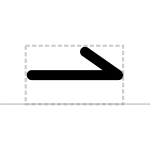
ProcessGlyphc back to ToC or Class ToC
IRI: #ProcessGlyph
- has super-classes
- Glyph c
- hasIncoming op some role some s b o:0000010
- hasOutgoing op some role some s b o:0000011
- InteractionNodeGlyph c
- isGlyphOf op some interaction
- isGlyphOf op some type some s b o:0000375
- default glyph
-

ProcessInteractionGlyphc back to ToC or Class ToC
IRI: #ProcessInteractionGlyph
PromoterSiteGlyphc back to ToC or Class ToC
IRI: #PromoterSiteGlyph
- has super-classes
- Glyph c
- MolecularSpeciesGlyph c
- isGlyphOf op some component
- isGlyphOf op some role some s o:0000167
- default glyph
-
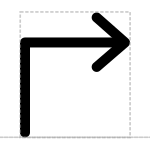
ProteinBiopolymerLocationGlyphc back to ToC or Class ToC
IRI: #ProteinBiopolymerLocationGlyph
- has super-classes
- BiopolymerLocationGlyph c
- isGlyphOf op some component
- isGlyphOf op some role some s o:0000699
- isGlyphOf op some role some s o:0001237
- has sub-classes
- ProteinBiopolymerLocationGlyphAlternative c
- default glyph
-
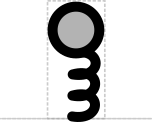
ProteinBiopolymerLocationGlyphAlternativec back to ToC or Class ToC
IRI: #ProteinBiopolymerLocationGlyphAlternative
- has super-classes
- ProteinBiopolymerLocationGlyph c
- isAlternativeOf op some ProteinBiopolymerLocationGlyph c
- default glyph
-

ProteinCleavageSiteGlyphc back to ToC or Class ToC
IRI: #ProteinCleavageSiteGlyph
- has super-classes
- CleavageSiteGlyph c
- isGlyphOf op some component
- isGlyphOf op some role some s o:0001956
- default glyph
-
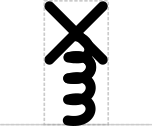
ProteinGlyphc back to ToC or Class ToC
IRI: #ProteinGlyph
- has super-classes
- Glyph c
- MolecularSpeciesGlyph c
- isGlyphOf op some component
- isGlyphOf op some type some s b o:0000252
- default glyph
-

ProteinGuideRnaComplexGlyphc back to ToC or Class ToC
IRI: #ProteinGuideRnaComplexGlyph
- has super-classes
- ComplexGlyph c
- has sub-classes
- ComplexGlyphAlternative c
- default glyph
-

ProteinProteinComplexGlyphc back to ToC or Class ToC
IRI: #ProteinProteinComplexGlyph
- has super-classes
- ComplexGlyph c
- has sub-classes
- ComplexGlyphAlternative c
- default glyph
-

ProteinSmallMoleculeComplexGlyphc back to ToC or Class ToC
IRI: #ProteinSmallMoleculeComplexGlyph
- has super-classes
- ComplexGlyph c
- has sub-classes
- ComplexGlyphAlternative c
- default glyph
-

ProteinStabilityElementGlyphc back to ToC or Class ToC
IRI: #ProteinStabilityElementGlyph
- has super-classes
- StabilityElementGlyph c
- isGlyphOf op some component
- isGlyphOf op some role some s o:0001955
- isGlyphOf op some role some s o:0001546
- default glyph
-
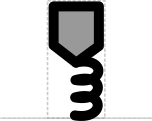
RibosomeEntrySiteGlyphc back to ToC or Class ToC
IRI: #RibosomeEntrySiteGlyph
- has super-classes
- Glyph c
- MolecularSpeciesGlyph c
- isGlyphOf op some component
- isGlyphOf op some role some s o:0000139
- default glyph
-
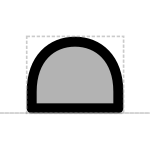
RnaBiopolymerLocationGlyphc back to ToC or Class ToC
IRI: #RnaBiopolymerLocationGlyph
- has super-classes
- BiopolymerLocationGlyph c
- isGlyphOf op some component
- isGlyphOf op some role some s o:0000699
- isGlyphOf op some role some s o:0001236
- has sub-classes
- RnaBiopolymerLocationGlyphAlternative c
- default glyph
-
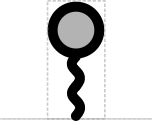
RnaBiopolymerLocationGlyphAlternativec back to ToC or Class ToC
IRI: #RnaBiopolymerLocationGlyphAlternative
- has super-classes
- RnaBiopolymerLocationGlyph c
- isAlternativeOf op some RnaBiopolymerLocationGlyph c
- default glyph
-
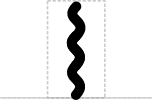
RnaCleavageSiteGlyphc back to ToC or Class ToC
IRI: #RnaCleavageSiteGlyph
- has super-classes
- CleavageSiteGlyph c
- isGlyphOf op some component
- isGlyphOf op some role some s o:0001977
- default glyph
-
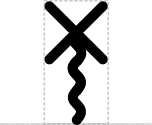
RnaStabilityElementGlyphc back to ToC or Class ToC
IRI: #RnaStabilityElementGlyph
- has super-classes
- StabilityElementGlyph c
- isGlyphOf op some component
- isGlyphOf op some role some s o:0001979
- default glyph
-
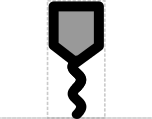
SignatureGlyphc back to ToC or Class ToC
IRI: #SignatureGlyph
- has super-classes
- Glyph c
- MolecularSpeciesGlyph c
- isGlyphOf op some component
- isGlyphOf op some role some s o:0001978
- default glyph
-
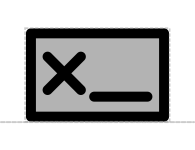
SimpleChemicalGlyphc back to ToC or Class ToC
IRI: #SimpleChemicalGlyph
- has super-classes
- Glyph c
- MolecularSpeciesGlyph c
- isGlyphOf op some component
- isGlyphOf op some type some s b o:0000247
- has sub-classes
- HexagonSimpleChemicalGlyph c, PentagonSimpleChemicalGlyph c, SimpleChemicalGlyphAlternative c, TriangleSimpleChemicalGlyph c
SimpleChemicalGlyphAlternativec back to ToC or Class ToC
IRI: #SimpleChemicalGlyphAlternative
- has super-classes
- SimpleChemicalGlyph c
- TriangleSimpleChemicalGlyph c
- PentagonSimpleChemicalGlyph c
- HexagonSimpleChemicalGlyph c
- default glyph
-

Single-StrandedNucleicAcidGlyphc back to ToC or Class ToC
IRI: #Single-StrandedNucleicAcidGlyph
- has super-classes
- Glyph c
- MolecularSpeciesGlyph c
- isGlyphOf op some component
- isGlyphOf op some type some s b o:0000250
- has sub-classes
- Single-StrandedNucleicAcidGlyphAlternative c
- default glyph
-

Single-StrandedNucleicAcidGlyphAlternativec back to ToC or Class ToC
IRI: #Single-StrandedNucleicAcidGlyphAlternative
- has super-classes
- Single-StrandedNucleicAcidGlyph c
- isAlternativeOf op some Single-StrandedNucleicAcidGlyph c
- default glyph
-

SpecificRecombinationSiteGlyphc back to ToC or Class ToC
IRI: #SpecificRecombinationSiteGlyph
- has super-classes
- Glyph c
- MolecularSpeciesGlyph c
- isGlyphOf op some component
- isGlyphOf op some role some s o:0000299
- default glyph
-

StabilityElementGlyphc back to ToC or Class ToC
IRI: #StabilityElementGlyph
- has super-classes
- Glyph c
- MolecularSpeciesGlyph c
- isGlyphOf op some component
- isGlyphOf op some role some s o:0001979
- isGlyphOf op some role some s o:0001955
- isGlyphOf op some role some s o:0001546
- has sub-classes
- DnaStabilityElementGlyph c, ProteinStabilityElementGlyph c, RnaStabilityElementGlyph c
- default glyph
-

StickyEndRestrictionEnzymeCleavageSiteGlyphc back to ToC or Class ToC
IRI: #StickyEndRestrictionEnzymeCleavageSiteGlyph
- has super-classes
- Glyph c
- MolecularSpeciesGlyph c
- isGlyphOf op some component
- isGlyphOf op some role some s o:0001975
- isGlyphOf op some role some s o:0001976
- has sub-classes
- FivePrimeStickyEndRestrictionEnzymeCleavageSiteGlyph c, ThreePrimeStickyEndRestrictionEnzymeCleavageSiteGlyph c
StimulationGlyphc back to ToC or Class ToC
IRI: #StimulationGlyph
StopSiteGlyphc back to ToC or Class ToC
IRI: #StopSiteGlyph
- has super-classes
- Glyph c
- MolecularSpeciesGlyph c
- isGlyphOf op some component
- isGlyphOf op some role some s o:0000616
- isGlyphOf op some role some s o:0000319
- isGlyphOf op some role some s o:0000327
- has sub-classes
- TranscriptionStopSiteGlyph c, TranslationStopSiteGlyph c
- default glyph
-

TerminatorGlyphc back to ToC or Class ToC
IRI: #TerminatorGlyph
- has super-classes
- Glyph c
- MolecularSpeciesGlyph c
- isGlyphOf op some component
- isGlyphOf op some role some s o:0000141
- default glyph
-
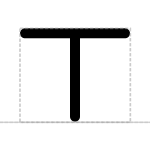
ThreePrimeOverhangSiteGlyphc back to ToC or Class ToC
IRI: #ThreePrimeOverhangSiteGlyph
- has super-classes
- OverhangSiteGlyph c
- isGlyphOf op some component
- isGlyphOf op some role some s o:0001933
- has sub-classes
- ThreePrimeOverhangSiteGlyphAlternative c
- default glyph
-

ThreePrimeOverhangSiteGlyphAlternativec back to ToC or Class ToC
IRI: #ThreePrimeOverhangSiteGlyphAlternative
- has super-classes
- ThreePrimeOverhangSiteGlyph c
- isAlternativeOf op some ThreePrimeOverhangSiteGlyph c
- default glyph
-

ThreePrimeStickyEndRestrictionEnzymeCleavageSiteGlyphc back to ToC or Class ToC
IRI: #ThreePrimeStickyEndRestrictionEnzymeCleavageSiteGlyph
- has super-classes
- StickyEndRestrictionEnzymeCleavageSiteGlyph c
- isGlyphOf op some component
- isGlyphOf op some role some s o:0001976
- has sub-classes
- ThreePrimeStickyEndRestrictionEnzymeCleavageSiteGlyphAlternative c
- default glyph
-

ThreePrimeStickyEndRestrictionEnzymeCleavageSiteGlyphAlternativec back to ToC or Class ToC
IRI: #ThreePrimeStickyEndRestrictionEnzymeCleavageSiteGlyphAlternative
- has super-classes
- ThreePrimeStickyEndRestrictionEnzymeCleavageSiteGlyph c
- isAlternativeOf op some ThreePrimeStickyEndRestrictionEnzymeCleavageSiteGlyph c
- default glyph
-
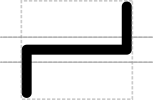
TranscriptionStopSiteGlyphc back to ToC or Class ToC
IRI: #TranscriptionStopSiteGlyph
- has super-classes
- StopSiteGlyph c
- isGlyphOf op some component
- isGlyphOf op some role some s o:0000616
- default glyph
-
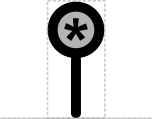
TranslationStopSiteGlyphc back to ToC or Class ToC
IRI: #TranslationStopSiteGlyph
- has super-classes
- StopSiteGlyph c
- isGlyphOf op some component
- isGlyphOf op some role some s o:0000319
- isGlyphOf op some role some s o:0000327
- default glyph
-
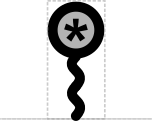
TriangleSimpleChemicalGlyphc back to ToC or Class ToC
IRI: #TriangleSimpleChemicalGlyph
- has super-classes
- SimpleChemicalGlyph c
- has sub-classes
- SimpleChemicalGlyphAlternative c
- default glyph
-

UnspecifiedGlyphc back to ToC or Class ToC
IRI: #UnspecifiedGlyph
- has super-classes
- Glyph c
- MolecularSpeciesGlyph c
- isGlyphOf op some component
- isGlyphOf op some role some s o:0000110
- has sub-classes
- UnspecifiedGlyphAlternative c
- default glyph
-

UnspecifiedGlyphAlternativec back to ToC or Class ToC
IRI: #UnspecifiedGlyphAlternative
- has super-classes
- UnspecifiedGlyph c
- isAlternativeOf op some UnspecifiedGlyph c
- default glyph
-

UnspecifiedNodeGlyphc back to ToC or Class ToC
IRI: #UnspecifiedNodeGlyph
- has super-classes
- Glyph c
- hasIncoming op some role some s b o:0000003
- InteractionNodeGlyph c
- isGlyphOf op some interaction
- isGlyphOf op some type some s b o:0000231
- default glyph
-

UnspecifiedSpeciesGlyphc back to ToC or Class ToC
IRI: #UnspecifiedSpeciesGlyph
- has super-classes
- Glyph c
- MolecularSpeciesGlyph c
- isGlyphOf op some component
- isGlyphOf op some type some s b o:0000285
- has sub-classes
- UnspecifiedSpeciesGlyphAlternative c
- default glyph
-

UnspecifiedSpeciesGlyphAlternativec back to ToC or Class ToC
IRI: #UnspecifiedSpeciesGlyphAlternative
- has super-classes
- UnspecifiedSpeciesGlyph c
- isAlternativeOf op some UnspecifiedSpeciesGlyph c
- default glyph
-




